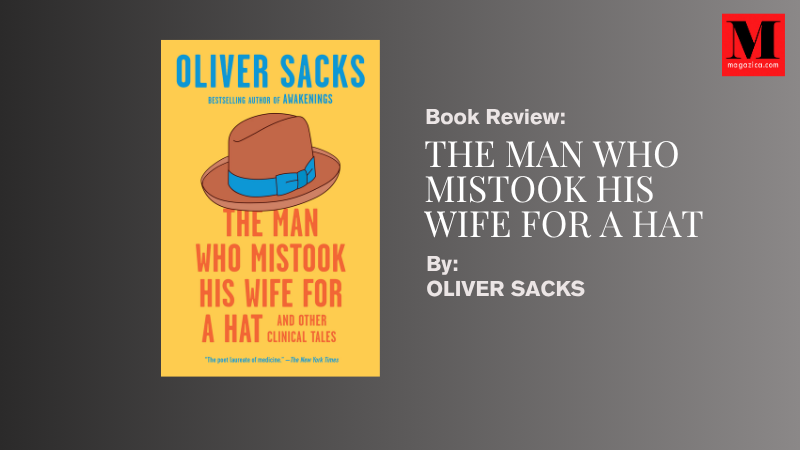Book Review: The Man Who Mistook His Wife for a Hat by Oliver Sacks
- Home
- Book Review: The Man Who Mistook His Wife for a Hat by Oliver Sacks

Book Review: The Man Who Mistook His Wife for a Hat by Oliver Sacks
Journey into the Mind’s Uncharted Territories: A Neurologist’s Poignant Tales of Identity and Perception
The Labyrinth of the Mind: Where Reality Warps and Identity Shifts (with a Side of Profound Reflection)
Enter with me a world in which the familiar is unfamiliar, where the senses mislead, and the definition of self is transformed. Join me in the inspiring clinical tales of Oliver Sacks, a neurologist who, in the manner of a wise sleuth, delves into the intricate and often confounding lives of his patients. This is a philosophical inquiry that intersects with neurological investigation, if Sherlock Holmes had been studying the mysteries of the brain and the human spirit rather than crime.
The “Oh My God, Did That Just Happen?!” Moments
Available Analogies for When Work Makes You Want to Question Everything
Discussion Questions to Stir the Pot at Book Club
1. Sacks rejects the classical neurological focus on “deficits” through the examination of “excesses” and “transports.” How do cases like Tourette’s syndrome or musical memories represent these “excesses,” and what do they show us about human experience outside the pathology?
2. The book recurrently juxtaposes “classical science” and “romantic science” in neurology. How does Sacks embody the “romantic science” approach, and what are the consequences for the understanding and treatment of neurological disease?
3. Describe the phenomenon of “anosagnosia” – the failure of the patient to appreciate his state – in Dr. P., Jimmie G., and other cases. How does it challenge our current explanation of consciousness and self-awareness?
4. Certain patients find meaning, comfort, or even creativity in non-verbal forms, such as music, drawing, or a feeling of community with nature. What does this reveal about brain compensation and human identity?
5. Sacks argues that classical neurology’s fixation with disembodied, computational representations of the brain neglects the “personal, Proustian quality of reminiscence of the mind, of life”. How do vivid, often emotional, “experiential hallucinations” triggered by stimulation of the temporal lobe give credence to this argument?
Why This Book Hurts So Good
Sacks’s genius is his skill at transforming challenging neurological cases into rich human stories that resonate profoundly.
He exposes the fragility of perception and identity, making you question the very building blocks of your own “normal” reality.
The book reveals the limits of purely mechanistic neuroscience in describing the brain, passionately promoting a “neurology of identity” that sees patients not as collections of symptoms, but as threatened human beings struggling to hold on to their selves.
Whereas others get left hauntingly lost in their states, still others have a mind-boggling resilience and adaptability, using innovative skills to exist and even thrive. It’s an unromanticized, candid, and often wondrously bizarre odyssey that forces us to struggle with the mysteries of the brain and the underlying humanity in even the most extreme neurological disorders.
The Verdict: A Prescription for Wonder and Empathy ★ ★ ★ ★ ★
Hot Take for the Group Chat:
“Are we merely all confabulating our lives, or does Sacks unlock the brain’s deepest secrets? Discuss – preferably while staring into a mirror.”
P.S. Keep this book away from anyone who thinks that their smartphone is the most complex thing in the universe. Just maybe skip the chapter on the ‘disembodied lady’ if you are somebody who tends to have existential breakdowns.
- Share
Suman Dhar
A qualified professional with extensive experience in education and human resources. As a HR Professional, Management Consultant, or Training Specialist, he is interested in cultivating intellect and curating insight.
